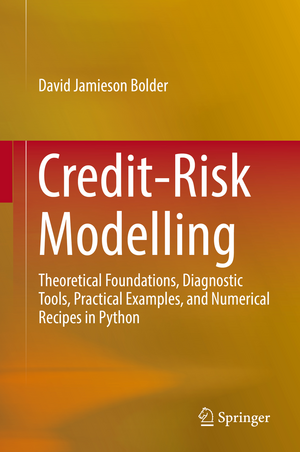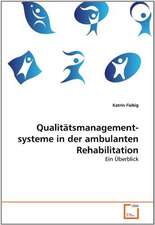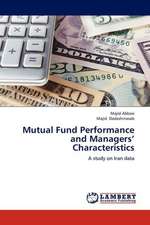Credit-Risk Modelling: Theoretical Foundations, Diagnostic Tools, Practical Examples, and Numerical Recipes in Python
Autor David Jamieson Bolderen Limba Engleză Hardback – 12 noi 2018
| Toate formatele și edițiile | Preț | Express |
|---|---|---|
| Paperback (1) | 512.18 lei 6-8 săpt. | |
| Springer International Publishing – 12 ian 2019 | 512.18 lei 6-8 săpt. | |
| Hardback (1) | 530.80 lei 3-5 săpt. | +47.34 lei 7-13 zile |
| Springer International Publishing – 12 noi 2018 | 530.80 lei 3-5 săpt. | +47.34 lei 7-13 zile |
Preț: 530.80 lei
Preț vechi: 639.51 lei
-17% Nou
Puncte Express: 796
Preț estimativ în valută:
101.57€ • 106.26$ • 84.37£
101.57€ • 106.26$ • 84.37£
Carte disponibilă
Livrare economică 12-26 martie
Livrare express 26 februarie-04 martie pentru 57.33 lei
Preluare comenzi: 021 569.72.76
Specificații
ISBN-13: 9783319946870
ISBN-10: 3319946870
Pagini: 670
Ilustrații: XXXV, 684 p. 130 illus. in color.
Dimensiuni: 155 x 235 x 49 mm
Greutate: 1.18 kg
Ediția:1st ed. 2018
Editura: Springer International Publishing
Colecția Springer
Locul publicării:Cham, Switzerland
ISBN-10: 3319946870
Pagini: 670
Ilustrații: XXXV, 684 p. 130 illus. in color.
Dimensiuni: 155 x 235 x 49 mm
Greutate: 1.18 kg
Ediția:1st ed. 2018
Editura: Springer International Publishing
Colecția Springer
Locul publicării:Cham, Switzerland
Cuprins
Getting Started.- Part I Modelling Frameworks.- A Natural First Step.-Mixture or Actuarial Models.- Threshold Models.-The Genesis of Credit-Risk Modelling.- Part II Diagnostic Tools.- A Regulatory Perspective.- Risk Attribution.- Monte Carlo Methods.- Part III Parameter Estimation.- Default Probabilities.- Default and Asset Correlation.
Recenzii
“The book is easy to read, the models and techniques are illustrated in detail and with complete derivations, making the volume accessible for self-study.” (Claudio Fontana, zbMATH 1422.91012, 2019)
Notă biografică
David Jamieson Bolder is currently head of the World Bank Group’s (WBG) model-risk function. Prior to this appointment, he provided analytic support to the Bank for International Settlements’ (BIS) treasury and asset-management functions and worked in quantitative roles at the Bank of Canada, the World Bank Treasury, and the European Bank for Reconstruction and Development. He has authored numerous papers, articles, and chapters in books on financial modelling, stochastic simulation, and optimization. He has also published a comprehensive book on fixed-income portfolio analytics. His career has focused on the application of mathematical techniques towards informing decision-making in the areas of sovereign-debt, pension-fund, portfolio-risk, and foreign-reserve management.
Textul de pe ultima copertă
The risk of counterparty default in banking, insurance, institutional, and pension-fund portfolios is an area of ongoing and increasing importance for finance practitioners. It is, unfortunately, a topic with a high degree of technical complexity. Addressing this challenge, this book provides a comprehensive and attainable mathematical and statistical discussion of a broad range of existing default-risk models. Model description and derivation, however, is only part of the story. Through use of exhaustive practical examples and extensive code illustrations in the Python programming language, this work also explicitly shows the reader how these models are implemented. Bringing these complex approaches to life by combining the technical details with actual real-life Python code reduces the burden of model complexity and enhances accessibility to this decidedly specialized field of study. The entire work is also liberally supplemented with model-diagnostic, calibration, and parameter-estimation techniques to assist the quantitative analyst in day-to-day implementation as well as in mitigating model risk. Written by an active and experienced practitioner, it is an invaluable learning resource and reference text for financial-risk practitioners and an excellent source for advanced undergraduate and graduate students seeking to acquire knowledge of the key elements of this discipline.
Caracteristici
Demonstrates a broad range of state-of-the-art credit-risk models and underscores their interlinkages Includes extensive Python code to bring the models, diagnostic tools, and estimation of key inputs parameters to life Combination of mathematical foundations and practical Python code implementation enriches the reader’s understanding and competence in this important field


























